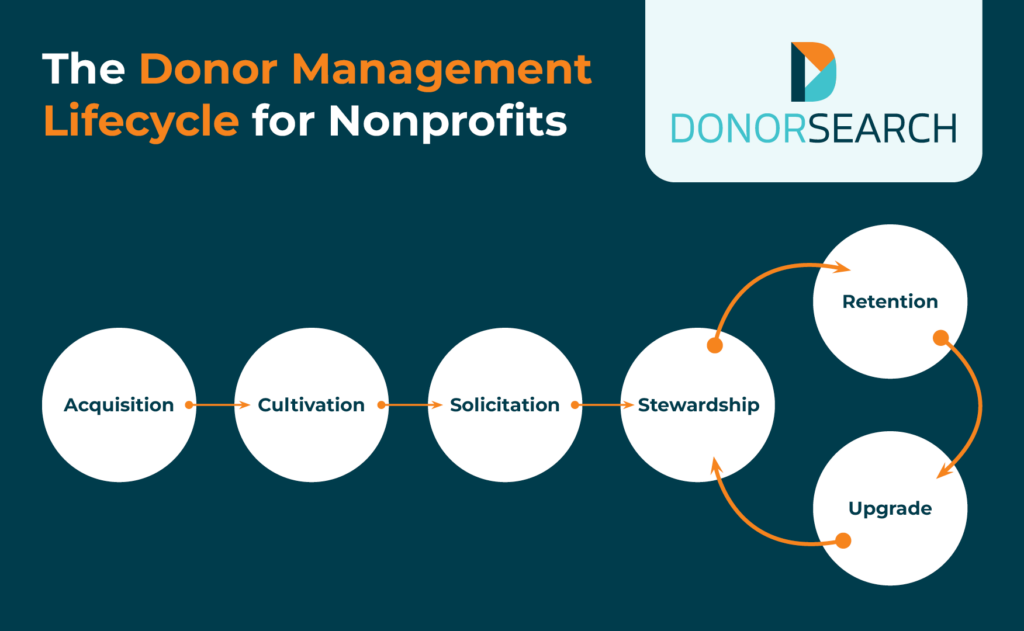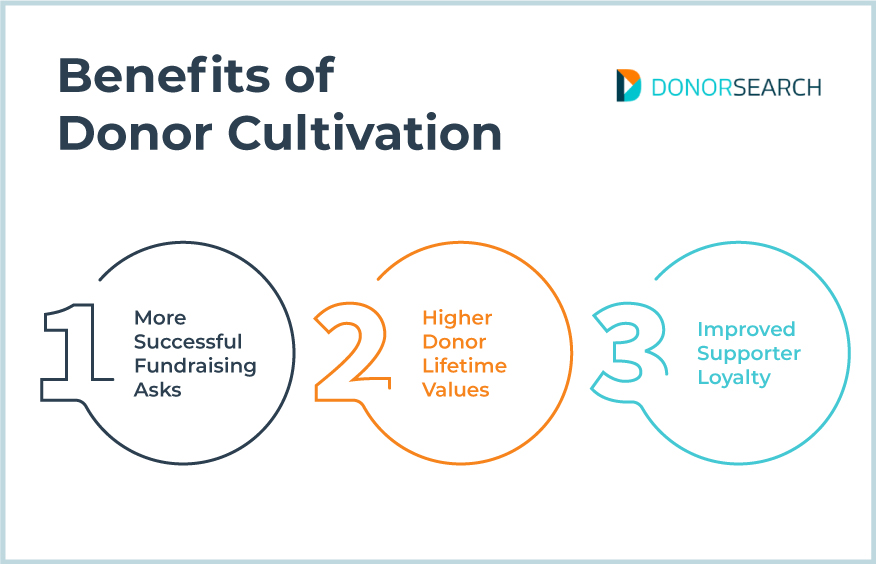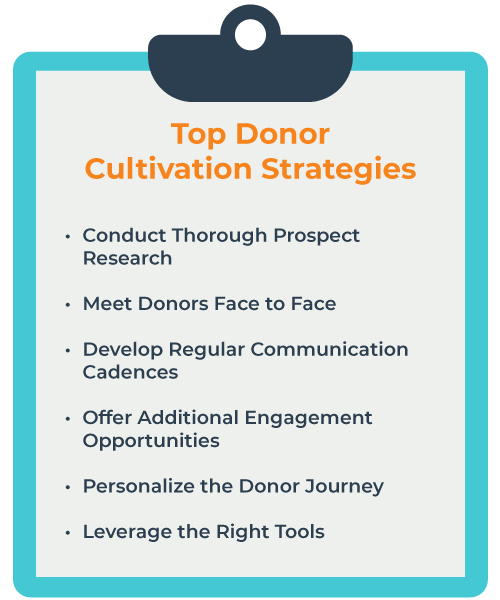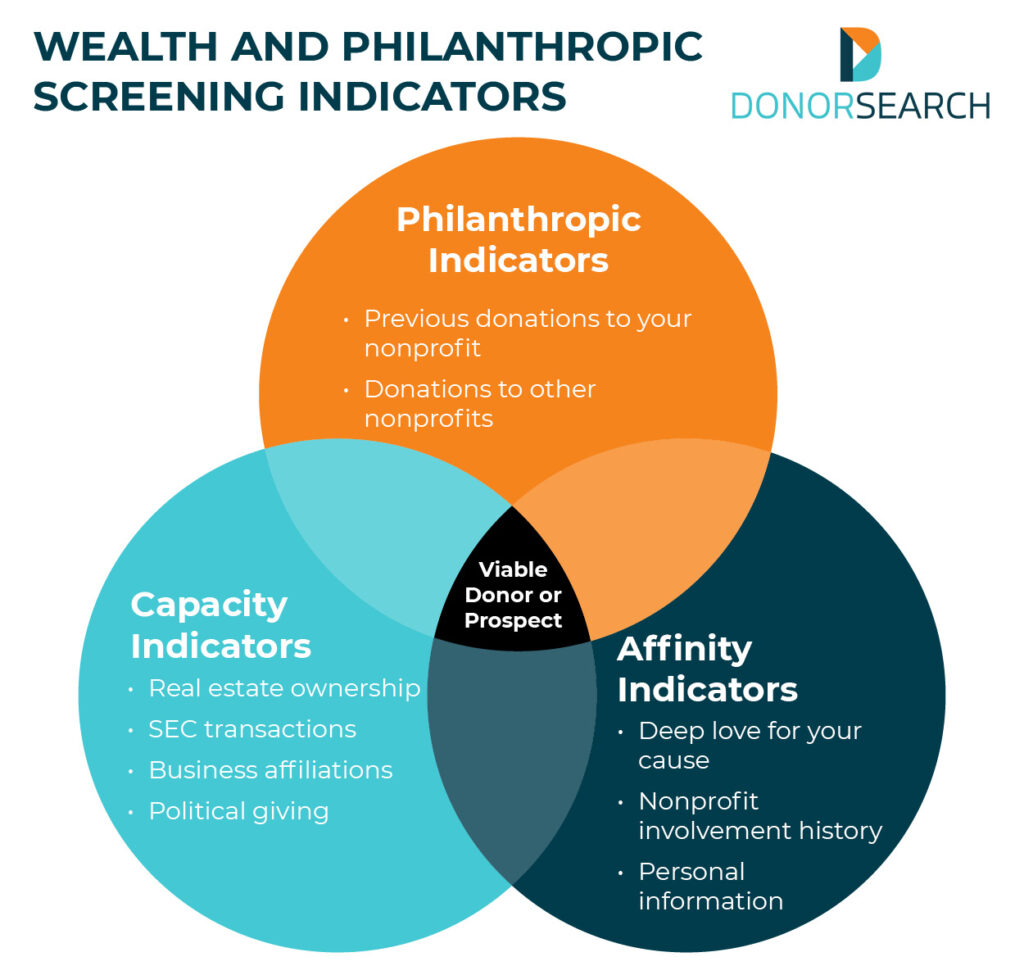
Donor Cultivation: The Basics + 6 Standout Strategies
Nonprofit donor prospects want to give to organizations they trust. Before they commit their hard-earned resources to your cause, they should be confident that your nonprofit will follow through on your promises to fund your mission and make the biggest possible difference. Not only that, but donors are more likely to give to organizations that make them feel valued as an integral part of their community.
Your nonprofit can meet all of these needs by prioritizing donor cultivation. To help you kickstart this process, this guide will cover the following topics:
- What is donor cultivation?
- Benefits of Donor Cultivation
- Strategies to Cultivate Donor Relationships
To build genuine relationships with your donors, the cultivation process should be specific to your audience, so make sure to adapt the tips in this guide to your organization’s prospects. That being said, let’s dive in!

What is donor cultivation?
Donor cultivation is the process by which nonprofits develop and strengthen relationships with current and prospective supporters. By regularly communicating with and getting to know your donors, your organization can tailor your fundraising and engagement asks to their interests and values, making them more likely to support you now and in the future.
Some donor cultivation should occur throughout a supporter’s entire relationship with your nonprofit. However, most of your efforts will be concentrated between the moment a donor initially connects with your organization and the moment you make your first significant donation request. Let’s look more closely at how cultivation fits into the larger donor journey.
The Donor Management Lifecycle for Nonprofits
Cultivation is the second of six steps in the nonprofit donor journey or donor management lifecycle, which shows how donors go from unengaged prospects to loyal supporters of your mission. Your organization will guide donors from one stage to the next through the process of moves management.
The steps of the donor management lifecycle include:

- Acquisition: A donor initially connects with your organization, either through interacting with your mass marketing content or by responding to direct outreach from your team.
- Cultivation: Your nonprofit gets to know the donor, noting their interests, values, and history of charitable giving and involvement. This is also the time to educate the donor on who your organization is and what you do to help them make an informed decision about supporting you.
- Solicitation: Your nonprofit makes its first significant donation ask based on the information you learned about the donor during the cultivation process.
- Stewardship: Once a donor responds positively to your solicitation, your organization expresses gratitude to them in a way that fits the size of their contribution.
- Retention: Your nonprofit continues to follow up with the donor to keep them engaged and offer other opportunities to get involved with your work.
- Upgrade: The donor increases their giving level (for example, going from one-time to recurring donor or mid-level to major donor). Then, your organization thanks them again and continues sending follow-ups with the eventual goal of another upgrade.
During the stewardship-retention-upgrade part of the cycle, your nonprofit will continue to nurture the relationships you’ve built with your donors and learn even more about them. However, your initial donor cultivation efforts will make or break their interest in giving to your organization and reaching that part of the journey in the first place.
Benefits of Donor Cultivation
If your nonprofit cultivates donors effectively, you’ll experience several key benefits, including:

- More successful fundraising asks. Through donor cultivation, you’ll discover the specific aspects of your organization’s work that prospects are most interested in supporting, as well as other personal information that will inform the timing and amount of your asks. By putting all of these details together, you’ll be able to craft personalized donation requests that donors are more likely to say yes to.
- Higher donor lifetime values. When donors have a positive relationship with your nonprofit, they’ll be more inclined to continue giving and increase their support over time. Additionally, understanding your donors’ backgrounds helps prevent you from leaving money on the table when asking for donations.
- Improved supporter loyalty. Donors with strong connections to your organization are also more likely to support your mission in other ways, such as volunteering or attending events. They might even spread the word about your nonprofit to their friends and family, helping you bring more supporters into the fold with less effort required.
Effective donor cultivation also sets the stage for increased retention rates down the line, creating a reliable support network that is essential for your organization to achieve financial sustainability.
Strategies to Cultivate Donor Relationships
In general, the larger the gift you plan to ask a prospective donor for, the more time and resources you’ll need to put into cultivation. Because of this, the following six donor cultivation strategies are most applicable when approaching major donor prospects, although some can be adapted for lower-level donors.

1. Conduct Thorough Prospect Research
Although most prospect research takes place during the acquisition stage of the donor management lifecycle, it lays the foundation for effective cultivation by giving you an overview of who your potential donors are and where their charitable inclinations lie. Once they provide more information about themselves, you can dig even deeper into your research to get a complete picture of the prospect.
Focus your donor cultivation efforts on prospects who have both the ability to make a large gift to your nonprofit
and the willingness to do so. In your prospect research, look for the following indicators (or “markers”):

- Capacity (wealth) indicators: Real estate ownership, SEC transactions, business affiliations, political giving
- Philanthropic indicators: Previous donations to your organization or other nonprofits
- Affinity indicators: Deep love for your cause, nonprofit involvement history, personal information (interests, values, personal and professional connections, etc.)
When an individual meets all three criteria, you’ve found a viable prospect! Then, once you’ve identified several prospects, a predictive modeling solution powered by artificial intelligence (AI) can help your organization determine which individuals to put the most effort into cultivating based on your goals and available resources.

2. Meet Donors Face to Face
Starting at the top of your prospect priority list, schedule one-on-one meetings with each prospect. In-person meetings are preferable since they create the best environment for relaxed, natural conversation—you could even chat over lunch or coffee. However, if the prospect lives far away from your nonprofit or requests to video chat for another reason, that is also an option.
During this meeting, provide the prospect with a basic overview of your organization and its current initiatives. Then, spend most of your time asking them questions about their background and life—after all, most people enjoy talking about themselves! Take note of key details the prospect shares and use them to create a new donor profile in your nonprofit’s database after the meeting.
Don’t just include information that will help you craft donation requests in the profile—also write down information about the prospect’s personal life that you can bring up in future interactions with them. For example, if they mention that they’re about to leave for a trip to Hawaii to celebrate their wedding anniversary, you can start your next conversation by asking how their vacation was and wishing them a happy anniversary. This shows that you were listening and care about them as a person, which will make them feel valued.
3. Develop Regular Communication Cadences
Once you’ve established an initial connection with a prospect, follow up with them regularly to keep your nonprofit top of mind and provide them with all of the information they may want before they donate. For example, you could:
- Provide impact reports on the projects and programs you told them about in your initial meeting.
- Send progress updates on ongoing initiatives.
- Invite them to a donor cultivation social or behind-the-scenes tour of your organization where they can meet other prospects and employees.
- Connect them with a staff member or board member who they may know or who is working on a project they may be interested in.
Keep a record of each prospect’s preferred communication method and use it whenever possible to send these follow-ups. Let’s say you discover that one of your prospects values education highly, so you decide to connect them with the director of your nonprofit’s school outreach program to help them learn more about it. You could make the introduction via email if the prospect primarily responds to emails, by setting up a call if they prefer to talk on the phone, or through LinkedIn if they say they’re a frequent social media user.
4. Offer Additional Engagement Opportunities
Being able to ask a prospect for a major gift right away is extremely rare. In most cases, it takes several smaller requests (and a lot of follow-ups!) to build up to the large solicitation.
Use what you know about a prospect’s interests and personal life to offer additional opportunities for them to engage with your nonprofit before making your fundraising ask, such as:
- Attending fundraising events. While many potential major donors enjoy an auction or gala, you might consider inviting athletically inclined prospects to events like 5K races or bike-a-thons.
- Volunteering. If possible, get them to volunteer for the initiative you want them to contribute to so they can see its inner workings firsthand. Invite them to bring their families to volunteer with them if appropriate—they can introduce their families to the nonprofit they’re considering giving to, and you’ll have more helping hands for your mission!
- Joining a committee or consulting on a project. Align these opportunities with the prospect’s professional experience. For example, someone who started their career in sales might be a good fit for your auction item procurement committee since they’re comfortable approaching business owners and “selling” them on contributing prizes for your event.
Make sure to thank prospects for everything they contribute, even if it’s just their time or expertise. Showing appreciation every single time lets them know you value their support in all ways, making them more likely to say yes when you finally make your donation request.
5. Personalize the Donor Journey
The key to effective moves management is flexibility. Although you should go into donor cultivation with a clear plan, it’s also important to adapt the plan as you learn more about the prospect. You might have to shift your entire end goal after discovering that they’re actually more interested in contributing to a different initiative than the one you intended, or you may just need to change your meeting schedule if you find out they’re going out of town—or anything in between!
In addition to tailoring your cultivation plan to each potential donor, personalize your communications with them. Even if you’re just sending a quick email or text, always greet them by their preferred name, and incorporate specific details about their background and engagement with your nonprofit into each message. This makes prospects feel like valued members of your organization’s community—not just ATMs with legs.
You should also continue checking your wealth screening tools throughout the donor cultivation process to keep up with any changes in prospects’ financial situations. This way, when the time comes to solicit a gift, you don’t risk offending them by asking for too much or leaving money on the table by requesting significantly less than they could give.
6. Leverage the Right Tools
Your nonprofit’s donor cultivation process will be much smoother and more streamlined if you have the right software in your toolkit. Make sure you have access to the following:
- A robust donor management system to track all of your interactions with prospects and everything you learn about them in the process.
- Communication tools to personalize and schedule follow-up messages.
- A prospect research database to fill in the gaps in your donor profiles and stay up-to-date on potential donors’ giving capacities and histories.
- AI solutions to analyze your donor data, create models to help you prioritize your outreach efforts, and enhance your messaging.
If you’re looking for a top-of-the-line donor cultivation platform trusted by nonprofits of all shapes and sizes, look no further than DonorSearch! DonorSearch’s prospect research database boasts an accuracy rate above 90%, so you can spend less time verifying results and more time building donor relationships. Plus, DonorSearch Ai provides both a top-of-the-line predictive modeling tool and generative AI capabilities to help your organization improve its communications with prospects.
But don’t just take our word for it—check out this video to learn how The Dynamic Catholic Institute partnered with DonorSearch to achieve a $25 million capital campaign goal:
Final Thoughts
Donor cultivation is essential for your nonprofit to build a strong support network. As you implement the above strategies, collect feedback from donors and prospects so you can continue to hone your process over time and develop even stronger relationships that lead to increased loyalty and retention.
For more information on donor cultivation, check out these resources:
- Major Gifts: A Guide to Securing Large Donations. Explore even more tips and best practices for securing the large contributions your nonprofit needs to thrive.
- A Complete Guide to Planned Gifts for Nonprofits. Many nonprofits treat planned gifts as a nice surprise, but intentionally cultivating them is highly beneficial—learn why in this guide.
- AI for Nonprofits: Everything Your Org Needs to Know. Discover how to leverage artificial intelligence effectively and ethically for donor cultivation and other functions at your organization.

